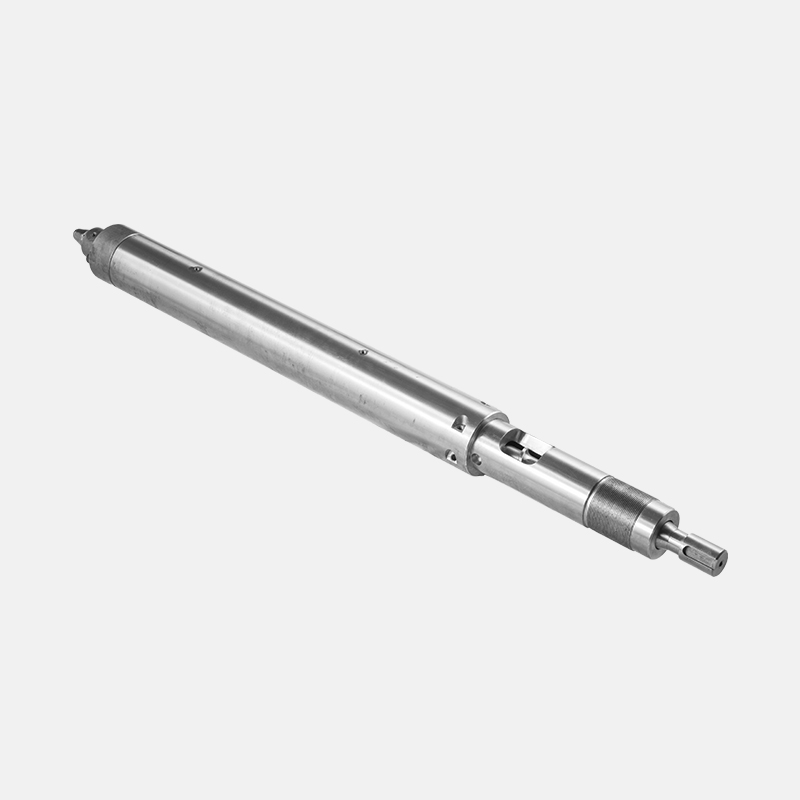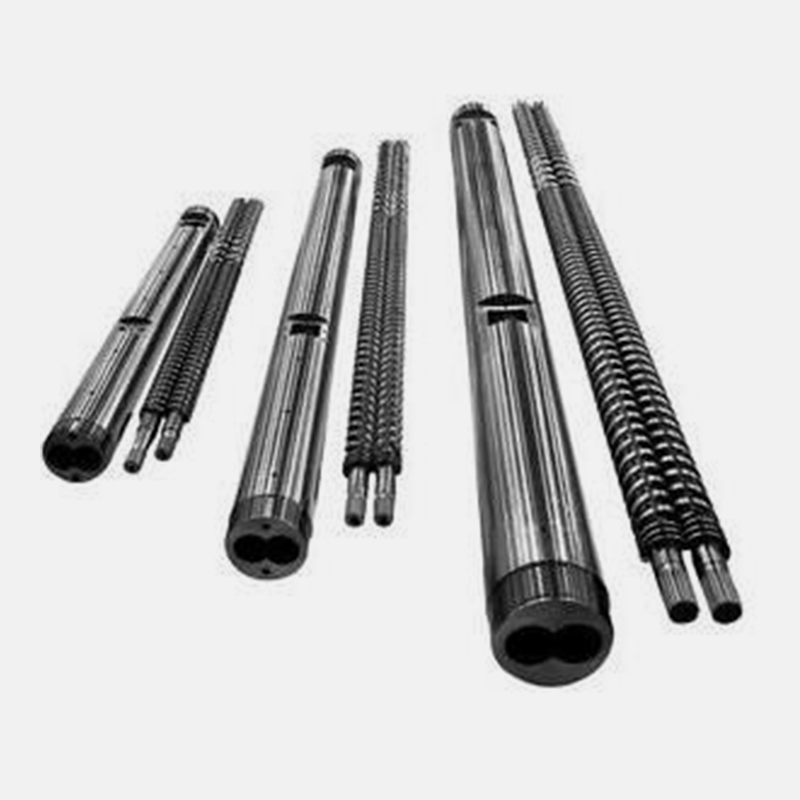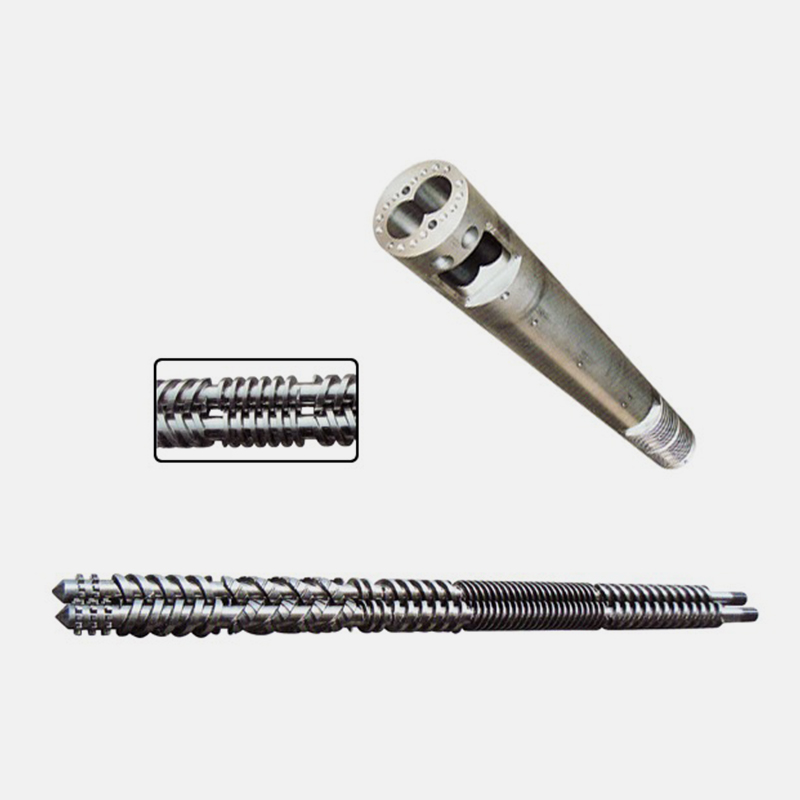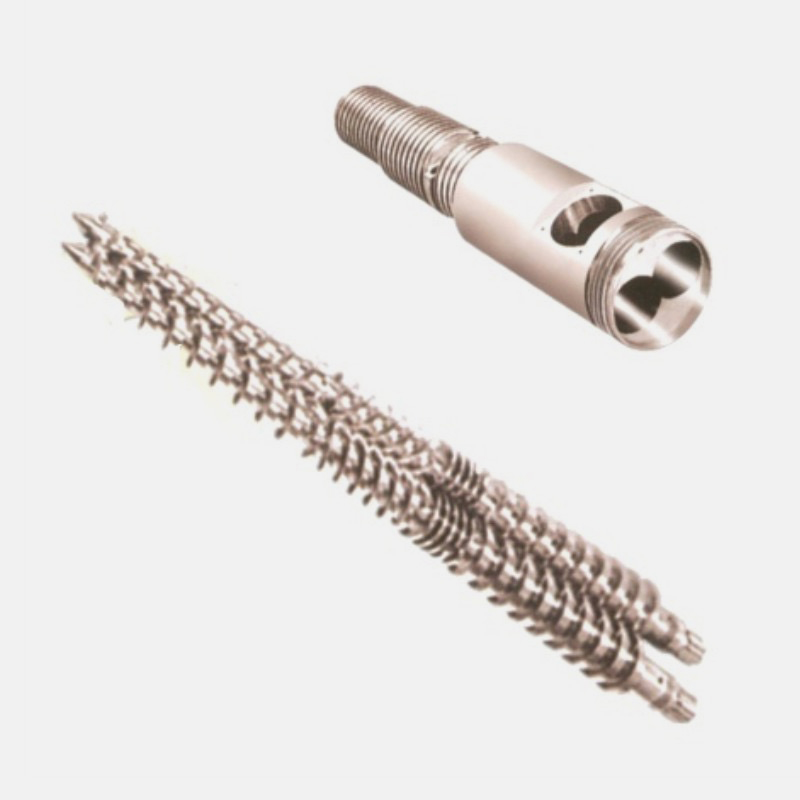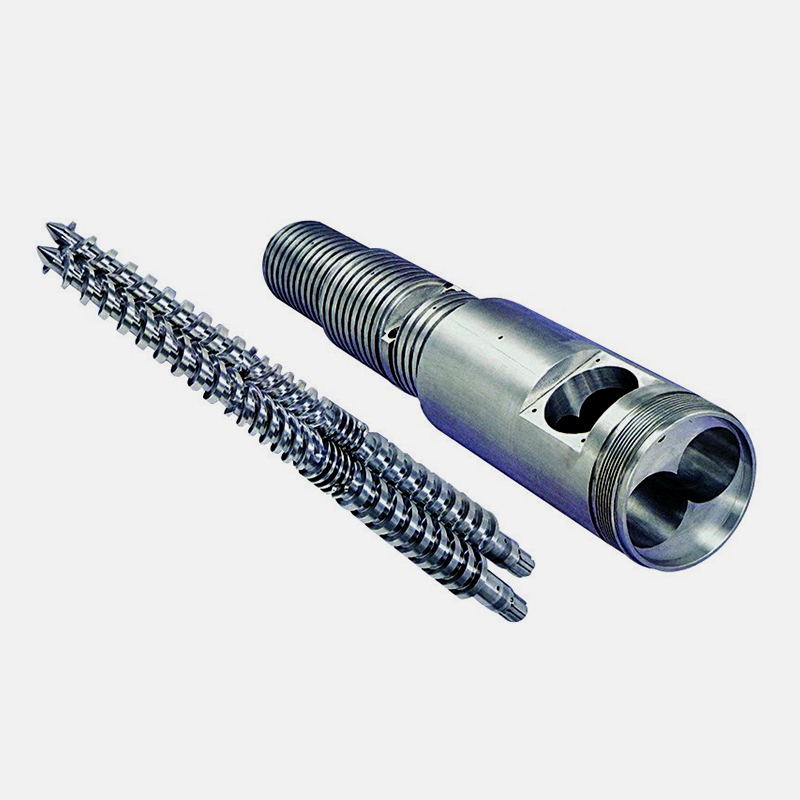In order to increase the service life of a screw barrel, it is possible to apply an alloy spray welding inlay. This will increase the corrosion resistance of the barrel but will be more expensive. This process makes use of premium composite alloy powders, including cobalt-based alloys, nickel-based alloys, and molybdenum-based alloys. Premium composite alloy powders can also be used to create bimetallic alloys. The materials used in the process are selected based on the actual material to be processed.High-quality nitride steel is a highly durable steel used in screw barrels. The process of nitriding the steel causes a hard layer to form on the barrel's working surface. The resulting surface hardness is typically 950 Vickers (68 Rockwell), which provides good wear and corrosion resistance. The process of nitriding can be done by using either a gas or plasma nitride process.
Halogen-free screw assembly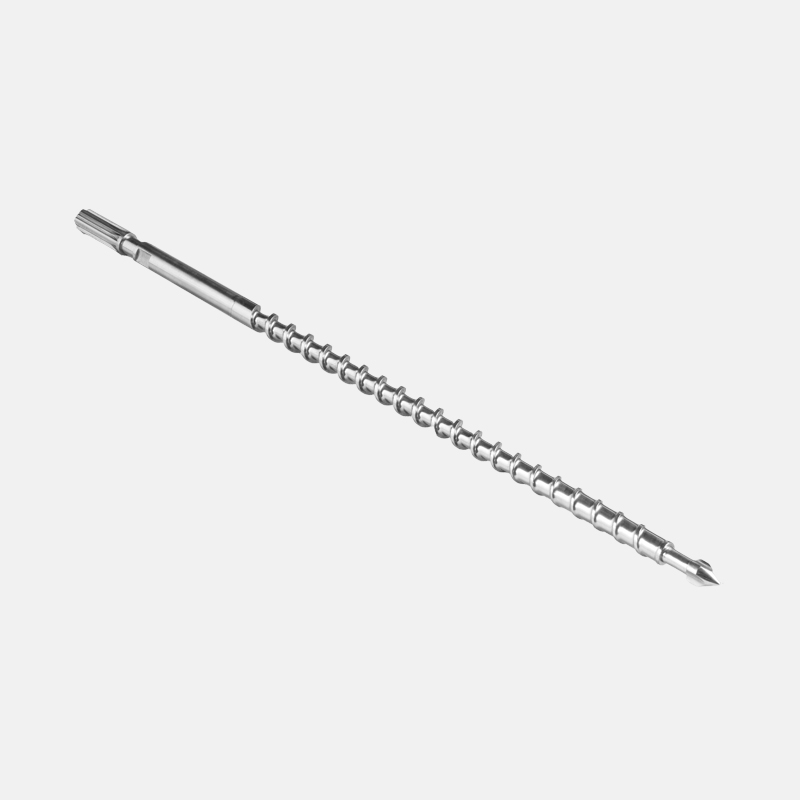 Nitriding screw barrel
Nitriding screw barrel improves the overall hardness of the barrel and screw, increasing the overall strength of the screw. Nitriding is also an effective way to enhance wear resistance, thereby improving the overall performance of the screw. However, this process has its drawbacks. In addition to its relatively high price, nitrided steel requires additional heat treatment.Gas nitriding is a process that diffuses nitrogen into the surface of a metal material to increase its hardness. The result is a barrel that offers superior wear resistance and corrosion resistance. This type of barrel can be used in various manufacturing processes including extrusion, injection, blow molding, and other processes.
Gas nitriding is one of the oldest types of nitriding and has been used for over a century. Recent developments in this process have enabled it to be more controlled and precise. It is possible to control the thickness and phase composition of the nitride layer based on the desired property requirements.The process produces a surface hardness on screws, typically above 60 Rc. The process begins by heating steel in a nitrogen atmosphere, allowing the nitrogen atoms to diffuse into the surface of the metal. This process also allows the atoms of nitrogen to mix with the nitride-bearing elements within the steel, forming a very hard layer. This hard layer gives nitrided screws good wear resistance until it wears away.Nitriding a screw barrel or screw is a common process used to increase the hardness of steel. Nitrided steel is thermally stable, which allows it to endure high temperatures.
However, screws made using this process tend to be brittle. This can be particularly problematic for high-pressure applications. In addition, nitrided steel is not particularly corrosion resistant. As a result, it is often preferable to use bimetallic screws in these applications.Nitriding a screw barrel will improve the hardness of the screw by increasing the surface hardness. The process will create a layer of steel that is typically 60 Rc or higher. The steel is heated in a nitrogen atmosphere, which causes the nitrogen atoms to diffuse into the steel surface. The nitrogen atoms will combine with other elements, forming a very hard surface. This layer of steel will be resistant to wear until the surface hardness wears away.

 English
English 简体中文
简体中文 España
España عربى
عربى


